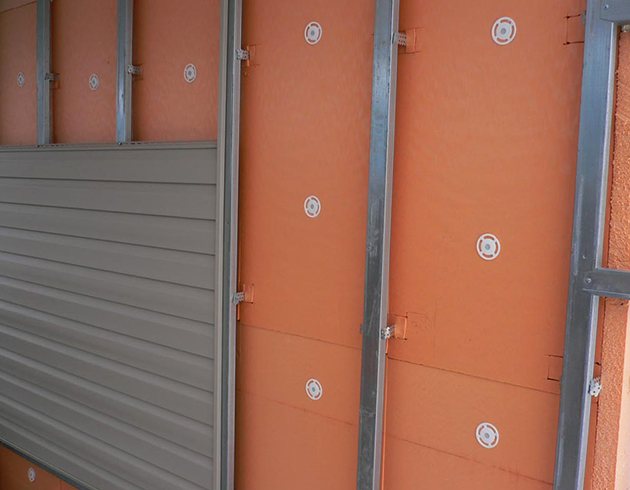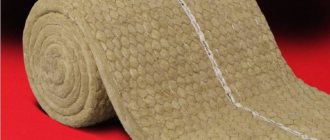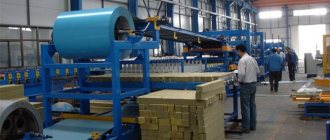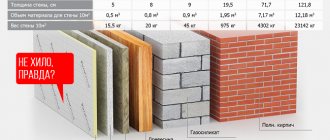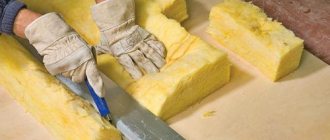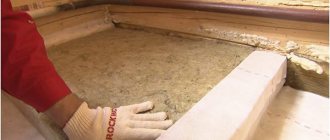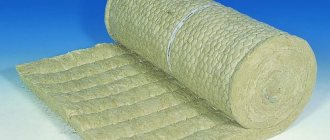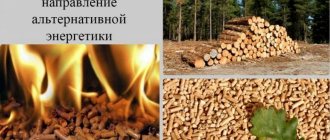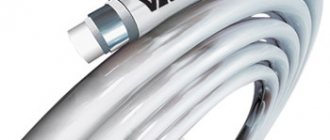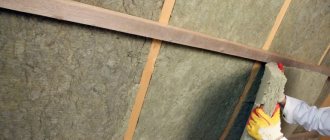What is Penoplex?
Under penoplex
traditionally understood as a material obtained from polystyrene by means of foaming, as well as extrusion with compression. It is actively used as a heat-insulating material in the field of construction.
The structure of the foam is represented by a large number of isolated cells that are filled with air. They are usually less than a millimeter in size. The material is highly durable. The density of the foam is about 29-35 kg / cu. m, the thermal conductivity index is about 0.029-0.039 W / (m * K). The material has low water absorption and vapor permeability.
What is expanded polystyrene?
Under expanded polystyrene
, or foam, is understood as a material that, like penoplex, is made of polystyrene by foaming, but without using extrusion with pressing. As a result, much larger cells are formed in the structure of the material - a few millimeters in diameter.
Foam plastic can, in principle, be used for the same purposes as penoplex - as a heat-insulating material. In addition, expanded polystyrene is often used in the factory packaging of household appliances - due to the combination of lightness, softness and elasticity.
Expanded polystyrene is much less durable than penoplex, has a higher thermal conductivity. The density of the foam is about 17-18 kg / cu. m. Its water absorption is noticeably higher than foam, but the vapor permeability of both materials is approximately at the same level.
Comparison
The main difference between foam and polystyrene foam is that the first material is produced using extrusion with pressing, as a result of which small cells are formed in its structure. Polyfoam is produced without using the noted technology - and therefore its cells are larger. The specifics of the manufacture of materials predetermines the difference in the indices of their density, thermal conductivity, water absorption.
Having determined what is the difference between penoplex and expanded polystyrene, we reflect the conclusions in the table.
Table
| Penoplex | Expanded polystyrene |
| What do they have in common? | |
| Both materials are made of polystyrene foam, in many cases interchangeable | |
| Comparable in terms of vapor permeability | |
| What is the difference between them? | |
| Manufactured using press extrusion | Manufactured without extrusion pressing |
| The structure of the material is represented by small cells | The structure of the material is represented by significantly larger cells |
| Has lower thermal conductivity | Has a higher thermal conductivity |
| Has a higher density | Has a lower density |
| Has less water absorption | Has great water absorption |
The main characteristic of any heat-insulating material is the coefficient of thermal conductivity. The lower it is, the better. In addition, it is necessary to pay attention to the moisture absorption of the material.
Which is better to choose - polystyrene or penoplex?
Do you want to understand what is the difference between polystyrene and polystyrene foam? Although these materials are similar in composition, they still have significant differences. After reading this article, you will learn about the manufacturing technology of both materials, their properties, advantages and disadvantages, as well as what are their differences.
The problem of choosing a heat-insulating material arises when the turn has come to insulate the walls. The insulated balcony, walls, even the ceiling and roof are the border that protects us from the effects of cold in the winter, and from the destructive heat in summer.The effectiveness of thermal insulation depends on the materials used in the construction. So that you do not have to "defrost" your summer cottage for a long time, and the heat in the house remains as long as possible, we advise you to insulate the surfaces using foam or polystyrene foam. Both materials are of synthetic origin, safe for human health, and can be used in the construction of industrial and residential buildings.
URSA XPS or Penoplex which is better
Penoplex is, in fact, the same extruded polystyrene foam, but only from another manufacturer. Which is better - penoplex or URSA XPS, depends on the cost of the insulation in your city, the cost of delivery, and in terms of their characteristics in thermal conductivity in practice, they differ little from each other. In terms of cost, URSA XPS boards are considered the more expensive material.
As you can see the characteristics of URSA is the optimal solution for a private developer. Plates are lightweight, easy to cut with a clerical knife and easy to install. For self-warming of a house with URSA XPS plates, no special skills and tools are required. At the same time, you will receive reliable protection from the cold with high mechanical strength and moisture resistance.
Polyfoam: features
It is a traditional material for thermal insulation work, which is produced by foaming polystyrene. This technology provides 98% of the air in its composition. Both polystyrene and the resulting polystyrene have:
- good moisture resistance;
- durable;
- wear-resistant;
- not subject to decay;
- they are not affected by sudden temperature changes, exposure to alkalis and acids;
- do not change their properties at high temperatures.
This material is attractive for its low cost and ease of installation. It is used to insulate walls, floors, ceilings and roofs.
Penoplex characteristics
This is a modern and equally popular insulation material.
Venerable rival
Insulation, in fact, is extruded polystyrene foam. This is a new generation of heat insulators that are able to effectively retain heat. Today, in the assortment of large stores, you can find a number of such building materials that are used for similar purposes, but still differ in their characteristics. Let's take a look and compare the most popular ones.
Penoplex competitors
Penoplex - one of the most demanded foam materials, the properties of which have been improved as a result of additional processing - extrusion. Penoplex use: attics, facades, roofs and foundations of buildings. For each of these objects there is a separate, most suitable type of slabs.
The widespread use of the product is possible due to a number of properties:
- Minimally absorbs water, which is important for heat insulators. A number of experiments were carried out, during which the product was left in water for several days - moisture penetrates only into the outer layers, and the inner closed cells remain dry.
- It has a low coefficient of thermal conductivity (0.03 W * m * ° C), and the value does not change significantly even in a humid environment. This expands the scope and allows the product to be used in conditions of increased dampness.
- Low vapor permeability - well protects the surface from moisture evaporation. According to this property, a 2-centimeter layer of material can replace a layer of roofing material.
- Long service life. During the experiments, it was found that the properties of the product did not change even after a significant change in external conditions - it was frozen and thawed, and also tested with water. The manufacturer indicated that the plates last about 50 years, but tests indicate a longer period of use.
- Compression resistance.Thanks to the production technology, the plate has a homogeneous structure with evenly distributed small cells, which improves strength and resistance to mechanical stress.
- Easy installation. The material can be cut even with an ordinary knife. Self-laying is possible without connecting masters.
- High level of environmental friendliness. The manufacturer used a type of freon that does not burn, is not poisonous and does not harm the environment.
- Minimal chemical activity. Does not react with most chemicals commonly used in construction: ketones (acetone, methyl ethyl ketone), formaldehyde, kerosene, gasoline, oil paints, etc.
- High biostability - boards are not subject to rotting and decomposition.
What is the difference between expanded polystyrene and penoplex?
Penoplex has a low thermal conductivity, so you need a small layer to carry out insulation work. It is also produced from polystyrene using the extrusion method (melting), which provides a single molecular structure. Therefore, penoplex is more elastic and wear-resistant than its foamed counterpart. Such insulation:
- not of interest to rodents, insects;
- not subject to decay, fungus and mold do not take it;
- burns poorly and self-extinguishes;
- weighs little;
- withstands the temperature range from -50 to +75 degrees.
Penoplex is used mainly for insulating loggias and balconies, country houses and apartment walls. Excellent ductility and low compression ratio allow the material to be used as a universal heat insulator. Often it is he who acts as the best option for insulating not only flat surfaces, but also pipes. Ease of installation allows finishing work without special preparation.
A significant advantage of penoplex over polystyrene is that rodents often start in the latter, and this leads to partial or complete damage to the material.
Material properties: what is the difference
To choose the most suitable material in terms of price and technical characteristics, let's try to figure out what is the difference between polystyrene (PT of one of the most popular brands PSB-S 25) and penoplex plates (PS).
- PT has a loose and heterogeneous structure, the edges are rough, which can crumble when pressed. Its analogue has a dense and monolithic structure, is not inclined to crumble and collapse when pressed.
- Thermal conductivity with an average air humidity: for PT - 0.045 W / (m × ° C) and for PS - 0.031 W / (m × ° C) (its thermal insulation properties are higher).
- The thickness of the insulation layer in the wall with the same degree of resistance to heat transfer: for PT - 140 mm (minimum), for PS - 100 mm (average, you can use less).
- Indicator of water absorption in 24 hours: PT - 2.13%, its opponent - 0.4% (absorbs moisture 5 times slower).
- Compressive strength: PT - 7 t / m2, PS - 20 t / m2 (almost 3 times stronger).
- Fire safety: PT refers to combustible materials that emit harmful substances during combustion, while the PS extinguishes on its own.
- PT due to its peculiarities has a high vapor permeability compared to PS, which allows the material to "breathe", but does not have the best effect on its thermal insulation properties.
- Service life: PT will last 10-15 years under the correct operating conditions, PS will live up to 50 years.
Do not forget that the price of penoplex is much higher than that of foam. Therefore, if you want to save money, then it is better to choose the second option.
Differences in laying technology
The main thing to pay attention to during installation is the elasticity and tendency of the material to crumble. Be careful with styrofoam as it breaks easily and can crumble. It is used only if any significant mechanical damage and certain loads are excluded. Otherwise, choose a more flexible and stable foam.
There is an opinion that more airy foam is best for insulating external walls, and thinner foam is best for balconies and loggias. If you started interior decoration of the room, then both one and the other material should be abandoned. The main reason is a possible displacement of the dew point, which threatens the inefficiency of the design.
There is no significant difference between the materials during installation on the roof, ceiling and floor. However, thanks to its stronger structure, penoplex will allow you to refuse to install floor coverings when working in the attic. Its versatility allows it to be installed with thermal insulation of foundations, plinths and pipes.
In modern professional construction, the use of both foam and foam is almost abandoned. The first is short-lived, the second is too expensive. In most cases, mineral wool is used for insulation.
Verdict
You should always make an informed choice and know what you are agreeing to. Having chosen polystyrene as the most economical and cheapest option, remember that you will need 1.5-2 times more material than penoplex. You will be able to significantly save only with large-scale construction work. In this case, you also run the risk of getting the wrong thermal insulation properties that you expected. After all, the slightest error in laying the foam can lead to dampness, and such insulation does not retain heat well and can become covered with fungus and mold.
Polyfoam is less durable and lends itself to the destructive influence of the environment, so in a dozen years a new, no less expensive, repair awaits you. So it is unlikely that it will be possible to get at least some significant benefit from the use of foam. Turn to a more durable and economical material in the future - penoplex.
There are exceptions, so each individual case should be weighed: is the use of more expensive polystyrene foam justified, or is it possible to get by with budget foam.
Video: Polyfoam and penoplex - check for flammability
How to make external insulation of the ceiling in a wooden house?
Innovations in modern building technology include the use of insulation to save other building materials and energy. There are enough types of insulation materials on the market, and the most popular are penoplex or polystyrene, which are made from artificial components. Penoplex is one of the variable transformations of polystyrene, and their parameters are in many ways similar, but somewhat different. Therefore, when choosing, foam or penoplex is better for warming a house, it is recommended to familiarize yourself in detail with their parameters and performance characteristics.
The main characteristics of PIR boards, the advantages and disadvantages of insulation.
What are the characteristics of PIR panels, why are they considered one of the best insulation materials today?
Thermal insulation qualities
For any insulation, of course, its thermal insulation characteristics always come first. The coefficient of thermal conductivity of PIR panels is indicated by some manufacturers even in 0.021 W / m × K - this is the best result among all materials used for such a purpose.
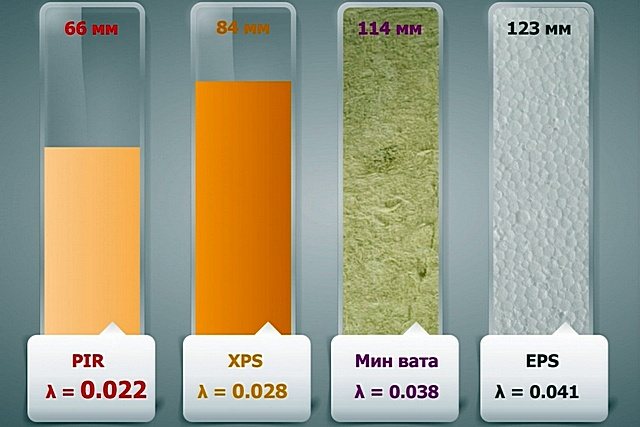
Comparison of the thicknesses of different heaters with an equal value of heat transfer resistance.
In fairness, it should be noted that such a low coefficient of thermal conductivity is still hard to believe. Perhaps it is achieved in some ideal laboratory conditions, but in real operation, especially in conditions of high humidity, it will be slightly higher. But all the same, even if we consider more "mundane" values, then 0.024 ÷ 0.026 W / m × K is an excellent indicator, unattainable for the vast majority of other insulation materials.
Hygroscopic and vapor permeable.
It would seem that the porous structure of the material is a prerequisite for the free penetration of moisture. However, everything is exactly the opposite. Rigid closed cells are practically impervious to water. Under experimental conditions, with a long (for 28 days) full immersion of the PIR plate in water, its water absorption by volume was no more than 1 percent. Moreover, in some samples from various manufacturers, this figure was even lower, from 0.25 to 0.5 percent.
This pronounced hydrophobicity means that moisture will be unable to have any significant negative effect on the thermal insulation properties of the material and on its overall durability.
The vapor permeability of polyisocyanurate foam is also very low. Its coefficient ranges from 0.0015 to 0.015 mg / m × h × Pa. By the way, this quality can not always be regarded as a "plus". For internal insulation or for thermal insulation of the roof, vapor barrier qualities are really an advantage - when organizing effective ventilation of rooms or an attic. But for the insulation of facades this is, rather, a disadvantage, since there will be no way out of moisture from the walls.
Density and strength properties
The porous gas-filled structure of polyisocyanurate foam predetermines the low density of PIR boards. It in various models of insulation ranges from 30 to 40, up to a maximum of 50 kg / m³. That is, it is convenient to work with the plates, their transportation and installation does not require any significant physical effort.
But this does not mean at all that the material is fragile. Ohm perfectly retains the given shape during the entire service life. The force that must be applied for a 10% deformation of the slab is at least 120 kPa, which corresponds to 1.22 kgf / cm². The material does not shrink. It is able to withstand multiple compressive loads without significant loss of strength and original shape, which is important, for example, when insulating flat roofs, on which people can move, performing certain types of work.
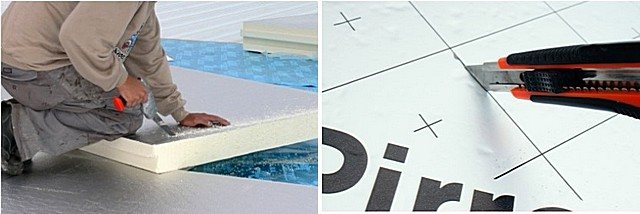

PIR plates can be easily cut into the desired size - with a hacksaw or, with a small thickness, even just with a sharp knife
At the same time, the boards lend themselves well to processing. It is not difficult to cut the panel to the required size when adjusting the insulation layer. Depending on the thickness of the PIR board, this can be done either with a hacksaw or even with a sharp construction knife.
Fire-fighting qualities
Indicators of resistance to fire are one of the most important when choosing any heaters, since for some types this is very unfortunate. But the use of PIR plates shouldn't cause any particular concerns.
The polyisocyanurate itself belongs to the flammability group G1 ÷ G2. That is, in this matter, it is somewhat inferior to many types of mineral wool, which are generally considered non-combustible (NG).
When exposed to an open flame, the top layer is carbonized, and this carbon crust prevents oxygen from penetrating and the spread of fire deep into and over the surface of the slab. It is important that there is no effect of melting and fluidity of the material - even in the most unfavorable conditions, it will not become a spreading source of flame.
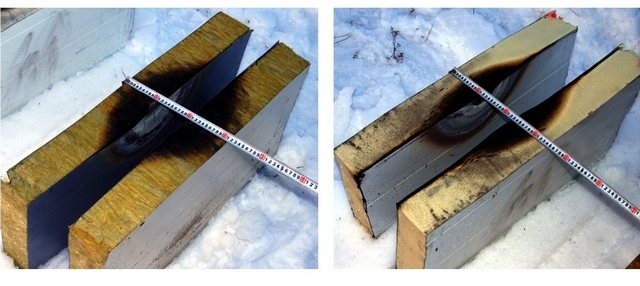

Results of firing tests with a point source of flame. On the left is a basalt mineral wool mat, on the right is a PIR slab.
The flammability group set for finished insulation boards also depends on the lining material, since the general assignment of a class is made according to the most flammable component:
- PIR slabs covered with aluminum foil or graphite-filled fiberglass, as well as sandwich panels with steel cladding are classified as G1.
- Panels coated with glass fiber or kraft paper - to class G2.
- Slabs with bitumen-impregnated fiberglass lining - class G3.
A characteristic feature of polyisocyanurate foam is that, as you can see, it does not spread flame, is not afraid of open fire, but when exposed to heat, already at 200 ° C it begins to lose strength and crumble. This can lead to the destruction of the very structure of the thermal insulation. And the fire resistance of the material is in direct proportion to its thickness. This must be taken into account if slabs (panels) are used to create load-bearing or self-supporting structures.
For example, for PIR sandwich panels with steel double-sided profiled lining, the fire resistance limit is:
- Thickness 40 mm - exposure to flame without loss of bearing capacity - 15 minutes (EI 15).
- Thickness from 60 to 120 mm - 30 min (EI 30).
- Thickness from 120 to 200 mm - 45 min (EI 45).
There is one more very important advantage of PIR heaters, which favorably distinguishes them from similar in structure plates made of extruded polystyrene foam (EPS). During thermal decomposition, there is no release of toxic products that pose a mortal danger to humans in case of fire.
Video: Comparative fire tests of insulation boards made of various materials
Other advantages of PIR boards
In addition to the impressive physical and operational characteristics listed above, some other positive qualities of this insulation can be noted:
- Manufacturers declare a pronounced durability of the material. So, the service life of insulation boards is estimated at 30 years or more.
- The range of permissible operating temperatures is very wide. The material does not lose its qualities either when cooled to - 70 ° С, or when heated to 120 ° С.
- PIR boards are not subject to rotting, decomposition, have a high chemical resistance to most aggressive compounds, with which one can theoretically assume contact during operation.
- Such insulation does not become a breeding ground for any life forms. Parasitic microflora does not settle in it, insects or rodents do not make nests - because of the practically zero air passed through.
- The intrinsic chemical stability of polyisocyanurate is a guarantee that the material during operation under normal conditions will not emit any harmful fumes into the atmosphere. The environmental friendliness of the insulation system is another important criterion for choosing this material.
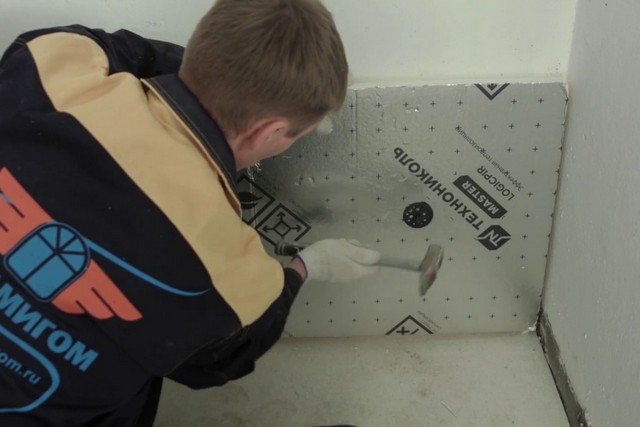

PIR boards are environmentally friendly throughout the entire period of operation, and therefore can be used for interior work without restrictions. There is no need to fear the emission of toxic substances.
- When installing PIR insulation structures, the boards do not generate dust and do not irritate the skin. Unlike laying mineral wool, there is no particular need for any eye and respiratory protection.
Disadvantages of PIR heaters
From an operational point of view, it is difficult to find "minuses" in such thermal insulation. However, the demand for PIR plates among the mass domestic consumer is still low. In any case, in comparison with mineral wool or EPS, the sales volumes are still small. There are two reasons for this phenomenon:
- Lack of information - many homeowners do not even know about such material.
- The price is too high, which, in the opinion of many potential buyers, is still not adequate for a consumer with an average income.
Hopefully, the cost of the material will eventually enter a more acceptable range, or the income of the average Russian will become much higher. And then the picture will be observed, as in many countries of Europe and America. There, for many years now, the tendency of gradual departure from other heaters in favor of more effective and safe thermal insulation based on polyisocyanurate foam has been steadily developing.
General information
It is possible to compare which of these products works best for insulation, only after their operational characteristics have been studied. What does the marking of the material PSB or PSB-S mean:
- PS - expanded polystyrene;
- B - unpressed manufacturing;
- C - self-extinguishing non-combustible material;
- The numbers in the marking indicate the density and resistance to mechanical stress.
| Characteristics | PSB-S-15 | PSB-S-25 | PSB-S-35 | PSB-S-50 |
| Density, kg / m 3 | ≤ 15 | 15,1-25 | 25,1-35 | ≥ 35,1 |
| Compressive strength at deformation 10%, ≥ MPa | 0,041 | 0,032 | 0,15 | 0,15 |
| Flexural strength, MPa | 0,065 | 0,17 | 0,21 | 0,32 |
| Thermal conductivity at 25 0 С +/- 5 0 С, ≤ W (m K) | 0,042 | 0,042 | 0,032 | 0,032 |
| Burning time, ≤ seconds | 4,01 | 4,01 | 4,01 | 4,01 |
| Humidity, ≤ | 12,15% | 12,15% | 12,15% | 12,15% |
| Moisture absorption per day, ≤ | 4,15% | 3,1% | 2,2% | 2,3% |
Polyfoam is made from artificial substances, making them react to the addition of gaseous fillers and foaming agents. The resulting gas bubbles expand during the manufacturing process, turning into foam balls of light weight and high heat resistance. These balls are then pressed or fused into slabs of different densities and used in construction and renovation. So, the insulation of a frame house with penoplex is considered one of the most effective and cheapest methods of insulation.
Penoplex is a variant of polystyrene with much better characteristics. Penoplex is also called extruded polystyrene foam, since it is made by melting or extrusion in special equipment - an extruder (high pressure thermal furnace). In the extruder, the balls are fused into a molded preform, which is a cooled and solid foam, similar to assembly building foam after solidification.
An obvious negative point in the characteristics of foam is high flammability, since it does not burn, but supports combustion.
Features and characteristics of Penoplex insulation
Penoplex (extruded polystyrene foam) and polystyrene differ in many respects, and above all - in the manufacturing method. Penoplex is a denser and harder thermal insulation, the surface of plates covered with extruded polystyrene foam remains strong and warm in any conditions, even with floor insulation, which cannot be said about the foam layer of thermal insulation. When insulating an EPSP floor, you don't even need to assemble the frame for its fastening, but lay the slabs directly on the rough concrete or wooden floor. The upper decorative laminate coating (when laying linoleum or carpet, chipboard or OSB is first laid) will not allow the weight of residents or furniture to push through the surface of the expanded polystyrene. In addition, the increased ability to retain heat is reflected in the quantitative indicator - expanded polystyrene will be required much less than other types of thermal insulation in order to obtain not only a warm, but also a durable floor.
As an example, one can cite, in which foam plastic plates with a thickness of 8-12 cm were used, while the thickness of the EPSP was enough to insulate the floor with a thickness of 3-4 cm. It will turn out warmer. Such high rates allow the use of extruded polystyrene foam even in the Far North. This quite accurately indicates that foam or foam is better.
Of the negative aspects of the operation of expanded polystyrene, high vapor permeability and cost can be noted. But the price justifies the quality that you get when using EPS, and for a good layer of thermal insulation, which will help save on energy during the heating season, and on the use of other materials and methods of building insulation, you can slightly increase the one-time costs for finishing the premises.
Main settings:
- Thermal conductivity: 0.029-0.031 W / m;
- Operating temperatures: -50 / + 75 0 С;
- Compression density: - 20,000-22,000 kg / m 2;
- Moisture absorption: 0.5%;
- Flammability class G3;
- Service time: ≥ 50 years;
- Practical slab thickness in use: ≥ 3 cm.
Comparison of Styrofoam and Styrofoam
As you can see, the question of whether foam or foam is better remains on the developer's conscience, since the operational characteristics of each of the heaters presented should be used to the maximum, but this often requires different initial conditions. Penoplex clearly wins at first glance, except for the cost, since the main indicators that are of interest to the owners of private housing construction are the thermal conductivity coefficient, which is almost twice as good for EPS.
In addition, penoplex (aka extruded polystyrene foam) retains moisture almost four times stronger, not allowing it to pass through the material, which means that water almost never passes through the foam layer. The material is almost non-combustible, and compared to foam, this is its clear advantage. Although the foam is usually protected from fire by plastering.
The next parameter of expanded polystyrene is density (physical strength), which is 2.5 times higher than that of foam. In practice, this is expressed in the fact that the EPS, when insulating the floor, can not even be protected with denser sheets, but immediately lay the finishing layer of the floor covering on it. The polystyrene is sold under similar loads immediately. Therefore, there is no question of insulating the floor with foam plastic - only the walls and the ceiling are insulated with it, and it is recommended to insulate only the outer walls, since the inner surfaces can be easily damaged by furniture or just an accidental blow.
But if it is necessary to insulate these particular surfaces without insulating the floor, polystyrene, of course, is preferable precisely because of its cheapness and ease of use. For the insulation of external walls, the thickness of the heat insulator layer does not play any role, as does the degree of moisture absorption - after all, the foam layer will still be closed, for example, with siding or clapboard, tiles or facing bricks.
Perhaps the most well-known material for external and internal wall insulation today is expanded polystyrene (polystyrene). Extruded polystyrene foam, known as penoplex and some others, competes with it. Let's set ourselves the task of comparing penoplex and polystyrene and decide - what should we still prefer for thermal insulation of a private house.
Difference between Styrofoam and Penoplex
Before starting to compare the properties of foam and foam, let's clarify what is the difference between these materials. Both of them are made from polystyrene, but using different technologies. Polyfoam (expanded polystyrene) is obtained by foaming polystyrene, it is a plate of sintered gas-filled granules. There are micropores inside them, and there are voids between the granules. The denser the granules are compressed, the greater the density of the foam, the lower its vapor permeability and water absorption. Compared to foam, penoplex, or extruded polystyrene foam, is produced in a different way - by extrusion, using increased temperature and pressure, as a result of which the finished material has a uniform structure with closed pores, the diameter of which does not exceed 0.2 mm.
Fire resistance
Stone mineral wool has better fire resistance than glass wool or slag wool insulation. Materials belong to the classes of non-flammable or low-flammable substances. The PIR insulation, depending on the top layer, belongs to the G1-G3 class, the highest fire resistance for graphite-coated panels. When exposed to an open flame, the PIR does not burn, but only charred. The fire resistance of mineral wool and PIR allows the use of both materials in the construction of wooden houses, including frame ones.


Comparative characteristics of foam and foam
Now let's look at the comparative characteristics of foam and foam. The most important of the qualities that heat insulators must possess are thermal conductivity and vapor absorption. It is useful, when comparing foam and polystyrene foam, to give the values of compressive strength.
Thermal conductivity
A comparative table of thermal conductivity of foam polystyrene foam (take, for example, materials of the same density) shows the following figures: foam plastic - 0.04 W / mK, penoplex - 0.032 W / mK. This means that there is approximately 25 mm of foam on a 20 mm thick extruded polystyrene foam board.We will not describe the table in detail, since the comparison of the thermal conductivity of polystyrene and polystyrene foam must be carried out taking into account the density of a particular brand of insulator, and we do not set such a task.
Moisture permeability
The next characteristic that interests us is a comparison of the properties of foam and foam in terms of moisture permeability. While the water absorption of the first does not exceed 0.4%, the second material reaches 2% in this characteristic. In other words, a comparison of this characteristic of foam and foam is in favor of the latter. When using extruded polystyrene foam, it is quite possible that there is no vapor barrier, however, with proper insulation with foam, this is undesirable.
Strength
It is indicative to compare penoplex and polystyrene in terms of compressive strength. In the first case, this value reaches 0.5 MPa, in the second - only 0.2 MPa. It should be borne in mind that the comparative characteristics of foam and foam of the same thickness and density make an almost fourfold difference obvious! That is why penoplex is good for the system of floor insulation in structures with high loads - it is used in garages, on skating rinks and even in the construction of runways.
Price
Of course, the comparative table of thermal conductivity of polystyrene foam, the difference between other technical characteristics is important. However, for a common man in the street, there is another important factor that he will certainly take into account when comparing foam and foam. This is the price. It is obvious that Penoplex insulation is in a higher price category than polystyrene; a cubic meter of extruded polystyrene foam is about one and a half times more expensive. Here is a stumbling block for many owners: is it cheaper to insulate, but worse, or more expensive, but of better quality? Many, having compared the prices of penoplex and polystyrene, choose the latter because of the cost.
In conclusion, we note that in construction, extruded polystyrene foam is increasingly replacing foam. In the United States and in many European countries, the use of foam plastic for finishing the facades of buildings is generally prohibited due to the poisonous toxins that it releases during combustion. In Russia, when building houses, they also gradually abandon the use of this material, replacing it with penoplex (which, by the way, is also quite fire hazardous) or non-combustible mineral wool.
What should the owner of the end apartment do if it blows from the walls ... in winter - cold, and in summer - hot? Or is there a need to actively use not only the useful, but also the total area of the apartment, for example, a small balcony or a large "cold" loggia?
Yes, there are many more such "if" and "or" ... And there is only one way out - insulation. The next question that arises before the owner of the premises is which insulation is better to choose.
An unprepared buyer may simply get confused among the names of certain modern heaters presented on the building materials market.
What do such concepts related to insulation as expanded polystyrene, extruded (extruded) expanded polystyrene or expanded polystyrene mean? Let's figure it out.
URSA XPS Specifications
The thickness of the URSA XPS boards is from 30 to 100 mm, the density of the boards is 35 and 50 kg / m3, the degree of flammability is G3 (combustible) and G4 (highly combustible). XPS slabs with G4 flammability rating should be used for thermal insulation of strip foundations and blind areas. When insulating house facades, it is recommended to use URSA XPS with a G3 flammability index, which contains fire retardant additives.
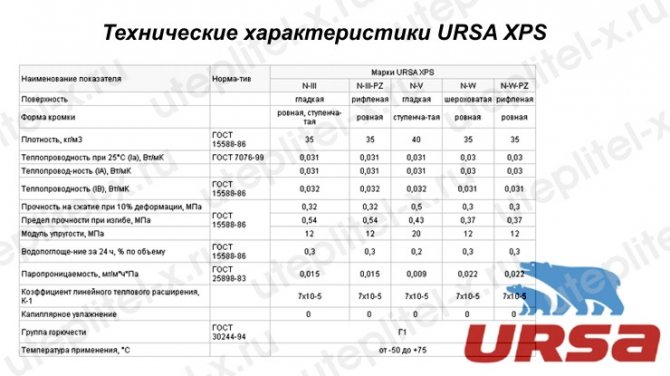

Table. Insulation URSA XPS specifications
URSA XPS N-III Specifications
- Thermal conductivity: 0.032 W / mK
- Application temperature: from -50 to +75
- Water absorption: no more than 0.3% of the volume in 24 hours
- Vapor permeability coefficient: 0.004 mg / mhPa
- Compressive strength at 10% deformation: 25 t / m²
URSA XPS N-III-G4 Specifications
- Thermal conductivity: 0.032 W / mK
- Application temperature: from -50 to +75
- Water absorption: no more than 0.3% of the volume in 24 hours
- Vapor permeability coefficient: 0.004 mg / mhPa
- Compressive strength at 10% deformation: 25 t / m²
URSA XPS N-V: specifications
- Thermal conductivity: 0.033 W / mK
- Application temperature: from -50 to +75
- Water absorption: no more than 0.3% of the volume in 24 hours
- Vapor permeability coefficient: 0.004 mg / mhPa
- Compressive strength at 10% deformation: 50 t / m²
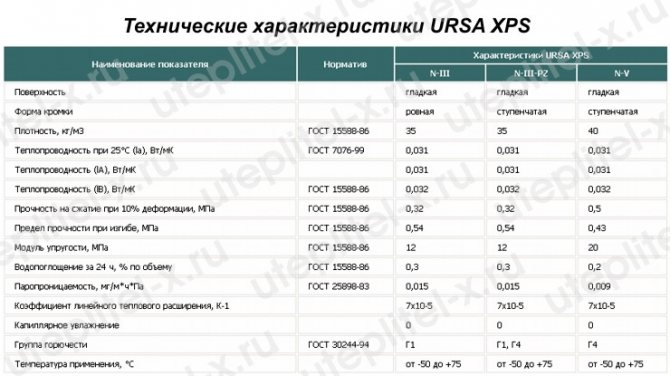

Table. URSA XPS Grades N-III, N-III-G4, and N-III-G4 Specifications
XPS N-V are rigid, CFC-free extruded polystyrene foam boards. URSA XPS N-V slabs have increased strength characteristics for professional construction. This is the most durable thermal insulation material - load up to 50 tons per sq. m. Thanks to this, the material is indispensable in structures subjected to high loads
Description of materials and their differences
Expanded polystyrene is expanded polystyrene (styrofoam). Depending on the manufacturing method, expanded polystyrene is divided into expanded polystyrene foam (EPS) and extruded polystyrene foam (XPS).
Extruded (extruded) expanded polystyrene - expanded polystyrene obtained by extrusion.
Penoplex is a trademark of a Russian manufacturer, under which extruded (extruded) expanded polystyrene is produced. Therefore, in relation to one manufacturer, penoplex or extruded polystyrene foam is one and the same heat-insulating material.
With regard to various enterprises for the production of extruded polystyrene foam, all consumer properties of extruded polystyrene foam and expanded polystyrene remain unchanged.
Comparison of foam and polystyrene foam
The first question that the buyer asks before purchasing insulation is - which is better than penoplex or expanded polystyrene? What is common and what is the difference between expanded polystyrene and expanded polystyrene?
The common thing for these two heaters is that they are both used in the construction industry as a thermal insulation material and are made from polystyrene, both materials are durable, biological resistance to microorganisms, light weight and ease of installation.
Differences between foam and polystyrene foam:
- Manufacturing technology
... Expanded polystyrene is created by processing polystyrene microgranules with water vapor, increasing their size under a high steam temperature until the mold is completely filled with expanded polystyrene foam. Extruded polystyrene foam is produced using the extrusion method - mixing polystyrene microgranules at elevated pressure and temperature using a foaming agent and extrusion from an extruder. - Appearance and structure
... The foam board looks like a very hard foam rubber with a uniform closed-cell structure. Expanded polystyrene has a granular structure. - Thermal conductivity
... The thermal conductivity indicators of penoplex are somewhat better than that of expanded polystyrene. - Air permeability
... Expanded polystyrene has good air permeability, in contrast to almost airtight foam. - Water vapor permeability.
The vapor permeability characteristic of foam is 5 times worse than that of expanded polystyrene. - Flammability
... Flammability class for G3-G4 foam (high flammability), for G1 expanded polystyrene (low flammability). - Mode of application
... Expanded polystyrene is best used for external insulation of facades and external walls. Penoplex is indispensable for insulating interior walls and balconies, roofs, as well as foundations of buildings and structures.
Advantages of URSA XPS thermal insulation
URSA XPS is an insulating material made of extruded polystyrene foam, which has a low thermal conductivity coefficient, is resistant to moisture and temperature extremes. Therefore, it can be used to insulate structures in contact with water or soil. The material is extremely resistant to compressive loads.
Unlike basalt inorganic thermal insulation, extruded polystyrene foam does not require additional vapor and waterproofing. According to its characteristics, the material has minimal water absorption and vapor permeability coefficient. Due to these properties, expanded polystyrene plates are used for insulating the blind area around the house and strip and USHP foundations.
What to look for when choosing
Extruded polystyrene foam Penoplex is produced in the form of plates of various markings - Penoplex 35, 31, 31C, 45C, 45, 75. Moreover, recently the marking of plates 35, 31, 31C has been replaced with new types:
- 35 (without fire retardants) - Penoplex-Foundation;
- 35 - Penoplex-Roofing;
- 31 - Penoplex-Wall;
- 31C - Penoplex Comfort.
The average consumer is unlikely to be interested in superdense slabs marked 45C, 45, 75 to solve the pressing problems of insulation.
Plates with increased strength are used for thermal insulation of load-bearing structures of buildings and structures, roadways, loaded structures and airfield runways. The thickness of the slabs is 40, 50, 60, 80 and 100 mm, and the size is 600 by 2400 mm.
Therefore, the question of choosing between the materials expanded polystyrene and expanded polystyrene 45 or 75 is raised only on an industrial scale.
An ordinary buyer, as a rule, needs to opt for one of two options - expanded polystyrene or Penoplex 35? Or, in light of the latest innovations from the penoplex manufacturer - Penoplex-Foundation, Penoplex-Roof, Penoplex-Wall and Penoplex-Comfort.
The new labeling of thermal insulation boards speaks for itself here. Extruded polystyrene foam or penoplex 35 is divided by the manufacturer into two types - without the use of special treatment to reduce flammability for Penoplex-Foundation and impregnated with fire retardants for Penoplex-Roof.
Expanded polystyrene Penoplex-Comfort is the most versatile material grade. Plates are used for thermal insulation of balconies and loggias, roofs, walls, plinths, foundations and floors, as well as for insulation of garages and outbuildings.
The almost complete waterproofness of the slabs makes it possible to use them for thermal insulation of baths, saunas and swimming pools with a high level of humidity. The thickness of the slabs is 20, 30, 40, 50, 60, 80 and 100 mm, and the size is 600 by 1200 mm.
Description of the material (video)
Pricing
The production of both expanded polystyrene and polystyrene foam is quite cheap. What is their retail value?
The price of extruded polystyrene foam and polystyrene foam at the very minimum parameters (density, thickness, quantity in a package) starts, respectively, from 1000 rubles. and 1200 rubles. per packing. Conclusion - the trademark of various manufacturers also matters when choosing and purchasing insulation.
The most expensive insulation among all brands of extruded polystyrene foam was Penoplex. And with the increase in the characteristics of thermal insulation boards of different brands, the price also increases accordingly - up to 3000 rubles. and 4200 rubles.
The cost of expanded polystyrene (foam) also depends on the physical characteristics and the manufacturer and is in the range of 1000 - 3000 rubles. per packing. The price of foam and polystyrene foam on the building materials market is slightly different in favor of the latter.
The small price difference between expanded polystyrene and expanded polystyrene is most likely due to a more complex technology for the manufacture of expanded polystyrene ... and maybe the seller's margin is too high.
Penoplex
Insulation of American production. Made from expanded polystyrene. When extruded in expanded polystyrene, closed cells filled with air are formed. This structure ensures the strength of the material.
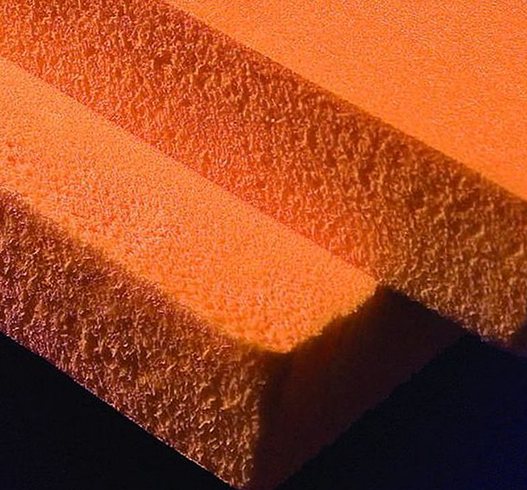

Several types are available, depending on the purpose of use:
- Penoplex Wall (Penoplex 31 with flame retardant). It is used when arranging a basement, internal and external walls.
- Penoplex Foundation (Penoplex 35 without flame retardant). It is used for thermal insulation of the plinth and foundation.
- Penoplex Roofing (Penoplex 35). Insulation used in the construction of roofs of various configurations. Due to its strength, it is used in the construction of inverted (flat functional) roofs.
- Penoplex Comfort (Penoplex 31C). Universal coverage. It is used for thermal insulation of any part of the building.
